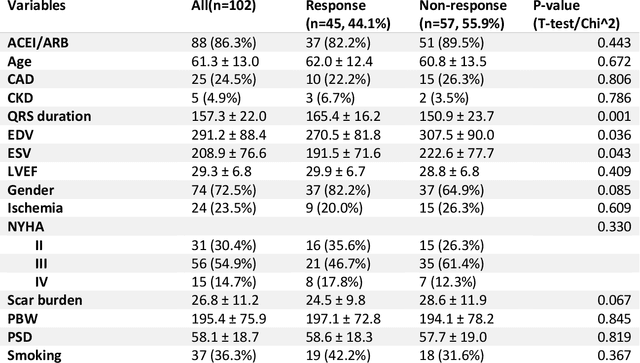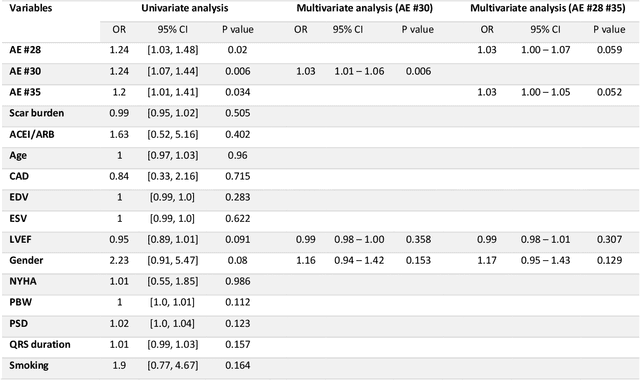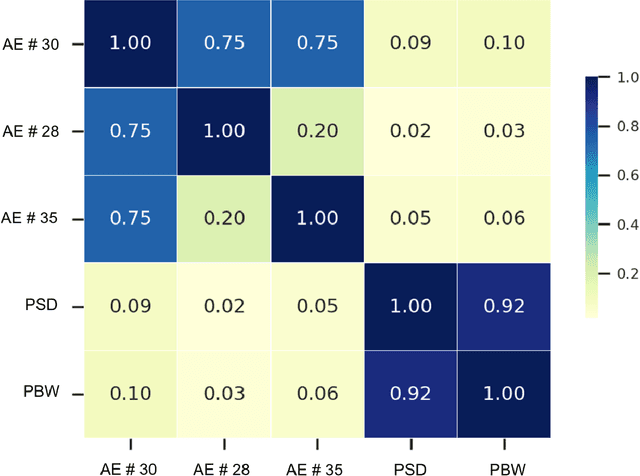A method using deep learning to discover new predictors of CRT response from mechanical dyssynchrony on gated SPECT MPI
Paper and Code
Jun 01, 2021



Background. Studies have shown that the conventional left ventricular mechanical dyssynchrony (LVMD) parameters have their own statistical limitations. The purpose of this study is to extract new LVMD parameters from the phase analysis of gated SPECT MPI by deep learning to help CRT patient selection. Methods. One hundred and three patients who underwent rest gated SPECT MPI were enrolled in this study. CRT response was defined as a decrease in left ventricular end-systolic volume (LVESV) >= 15% at 6 +- 1 month follow up. Autoencoder (AE), an unsupervised deep learning method, was trained by the raw LV systolic phase polar maps to extract new LVMD parameters, called AE-based LVMD parameters. Correlation analysis was used to explain the relationships between new parameters with conventional LVMD parameters. Univariate and multivariate analyses were used to establish a multivariate model for predicting CRT response. Results. Complete data were obtained in 102 patients, 44.1% of them were classified as CRT responders. AE-based LVMD parameter was significant in the univariate (OR 1.24, 95% CI 1.07 - 1.44, P = 0.006) and multivariate analyses (OR 1.03, 95% CI 1.01 - 1.06, P = 0.006). Moreover, it had incremental value over PSD (AUC 0.72 vs. 0.63, LH 8.06, P = 0.005) and PBW (AUC 0.72 vs. 0.64, LH 7.87, P = 0.005), combined with significant clinic characteristics, including LVEF and gender. Conclusions. The new LVMD parameters extracted by autoencoder from the baseline gated SPECT MPI has the potential to improve the prediction of CRT response.
 Add to Chrome
Add to Chrome Add to Firefox
Add to Firefox Add to Edge
Add to Edge